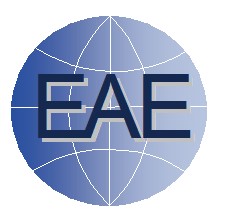Piping & Sanitary

Piping and sanitary systems are essential components of buildings, facilitating the distribution of water, gas, and other fluids, as well as the removal of wastewater and sewage. These systems play a crucial role in maintaining public health, hygiene, and safety within residential, commercial, and industrial settings.
1. Plumbing Systems:
- Water Supply Piping: Water supply piping delivers potable water from the municipal water mains or private wells to plumbing fixtures and appliances within buildings. Common materials for water supply piping include copper, PVC (polyvinyl chloride), PEX (cross-linked polyethylene), and CPVC (chlorinated polyvinyl chloride).
- Gas Piping: Gas piping distributes natural gas or propane from utility lines or storage tanks to gas-fired appliances such as water heaters, furnaces, stoves, and fireplaces. Gas piping materials may include black steel, stainless steel, or flexible corrugated tubing (CSST).
- Fire Sprinkler Systems: Fire sprinkler systems use piping networks to distribute water or other extinguishing agents throughout a building to suppress fires in case of emergency. These systems are designed to automatically activate when smoke or heat is detected, helping to prevent property damage and save lives.
2. Sanitary Drainage Systems:
- Sanitary Drainage Piping: Sanitary drainage piping collects and removes wastewater and sewage from plumbing fixtures, appliances, and drainage points within buildings. It transports the wastewater to municipal sewers or on-site septic systems for treatment and disposal.
- Ventilation Systems: Ventilation piping provides a means for venting sewer gases and odors from the sanitary drainage system to the atmosphere. Vent pipes extend from plumbing fixtures, such as sinks and toilets, to the roof or exterior of the building, allowing for proper air circulation and pressure equalization within the system.
- Stormwater Drainage Systems: Stormwater drainage systems collect and convey rainwater and surface runoff away from buildings to prevent flooding and water damage. These systems may include gutters, downspouts, drain pipes, catch basins, and retention ponds to manage stormwater runoff effectively.
3. Plumbing Fixtures and Appliances:
- Sinks and Faucets: Sinks and faucets provide a convenient source of water for handwashing, dishwashing, and food preparation in kitchens, bathrooms, and utility rooms. They come in a variety of styles, sizes, and materials to suit different preferences and functional needs.
- Toilets and Urinals: Toilets and urinals are sanitary fixtures used for the disposal of human waste. Modern designs feature water-efficient flushing mechanisms, dual-flush options, and touchless operation for improved hygiene and water conservation.
- Showers and Bathtubs: Showers and bathtubs provide a means for bathing and personal hygiene. They are available in various configurations, including built-in alcoves, freestanding units, and combination shower-bath fixtures, to accommodate different space constraints and user preferences.
4. Water Treatment and Filtration:
- Water Filtration Systems: Water filtration systems remove impurities, contaminants, and sediments from drinking water to improve taste, odor, and clarity. They may include activated carbon filters, reverse osmosis membranes, UV sterilization, and ion exchange technology.
- Water Softening Systems: Water softening systems reduce the hardness of water by removing minerals such as calcium and magnesium, which can cause scale buildup and affect the performance of plumbing fixtures and appliances. These systems use ion exchange resin or salt-based regeneration methods to soften water.
5. Plumbing Codes and Regulations:
- Building Codes: Plumbing systems must comply with local building codes, regulations, and standards to ensure safety, health, and environmental protection. These codes govern the design, installation, and maintenance of plumbing systems to prevent waterborne illnesses, plumbing failures, and property damage.
- Permitting and Inspection: Permits and inspections are typically required for new plumbing installations, alterations, or repairs to verify compliance with building codes and ensure proper construction practices.
